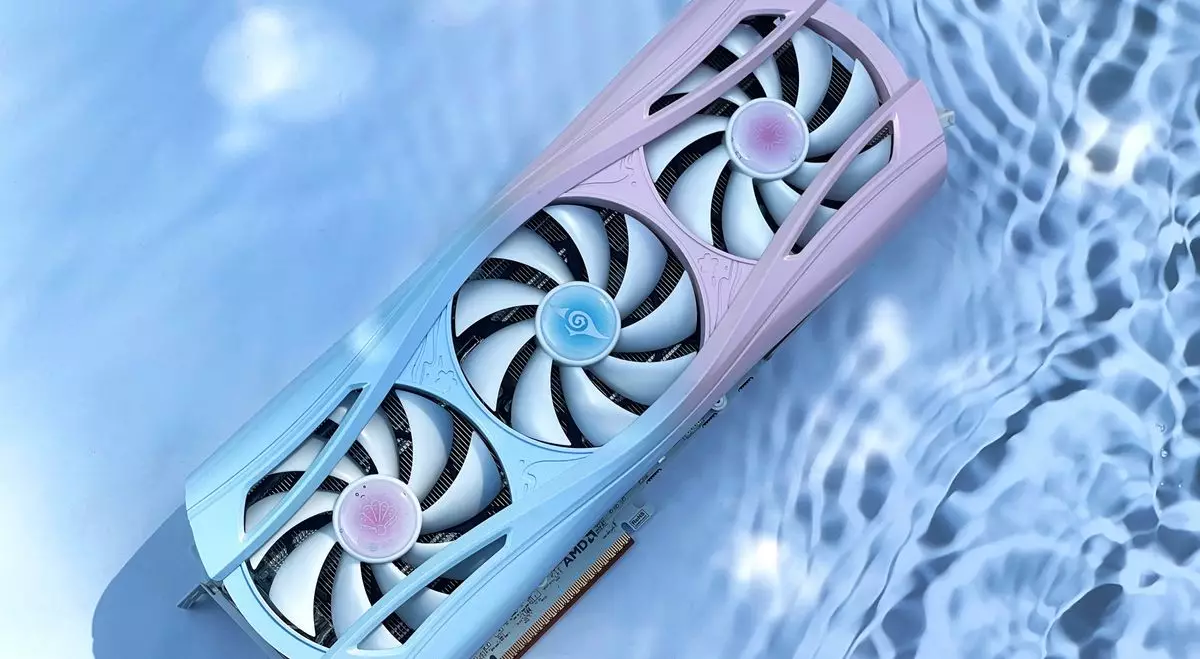The recent launch of AMD’s Radeon RX 9070 and RX 9070 XT graphics cards has undoubtedly stirred excitement in the gaming community. However, amidst this enthusiasm, a looming question persists: Can AMD meet the soaring demand while keeping prices close to the Manufacturer’s Suggested Retail Price (MSRP)? This inquiry was posed to David McAfee, a key figure in AMD’s graphics operations, during a recent engagement. His insights, albeit somewhat introspective, reflect the broader challenges faced by AMD and the graphics card market.
Launching new technology always brings difficulties, but the response to the RX 9070 series indicates that demand is higher than supply. According to Yeston, a Chinese graphics card supplier, the situation may stabilize post-April, providing a glimmer of hope for gamers. However, previous experiences with the volatile graphics card market raise skepticism regarding such projections. The urgency for these GPUs is palpable, especially when considering the high prices often associated with the modern gaming graphics landscape.
AMD’s Commitment to Retailers: A Balancing Act
In his response to the inquiry about ensuring availability at or near MSRP, McAfee emphasized a straightforward priority: restocking. “Priority number one is restocking all of our partners,” he stated, underscoring AMD’s commitment to its board partners, retailers, and etailers alike. This response indicates AMD’s recognition of the urgent need to replenish stock in the face of overwhelming demand.
However, while restocking is crucial, the company also needs to navigate the complexities inherent in the graphics card supply chain. Unlike CPUs, which AMD can sell directly, graphics cards involve multiple parties: AMD provides the chips, but it’s up to various graphics card manufacturers to design, market, and sell the final products. This complicated relationship means that even with adequate stock from AMD, pricing and availability can still vary drastically based on the decisions of other players in the market.
Demand vs. Supply: A Complicated Equation
The RX 9070 launch has been described by McAfee as a “milestone event,” reflecting both strong demand and a significant moment for AMD’s graphics division. Yet, this strong demand leads to a paradox: even when AMD has considerable stock, if the appetite from consumers vastly exceeds supply, prices will inevitably climb above MSRP. As witnessed on various platforms like Newegg, the RX 9070 XT is already out of stock, demonstrating that the existing supply isn’t sufficient to meet consumer needs.
What remains uncertain is the duration of this heightened demand. The gaming community desperately desires an affordable, next-gen GPU capable of performance-driven gameplay, but the question arises: how long can AMD sustain this demand without normalizing prices? The historical context indicates that the GPU market has been in a prolonged state of chaos, with prices inflating far beyond reasonable expectations.
AMD’s Strategic Decisions: A Double-Edged Sword
Another intriguing aspect of McAfee’s commentary is the company’s decision to forego the commissioning of reference designs for this launch. This decision reflects a strategy that allows AMD to leverage its partnerships with third-party manufacturers while maintaining an informal degree of control over the distribution process. However, it raises questions regarding AMD’s direct involvement in ensuring that consumers have access to cards at MSRP.
Historically, AMD has been a player in directly selling GPUs to gamers, but with the RX 9070 series, they opted out of that arena. This strategic choice, while potentially beneficial in releasing them to a broader audience, does mean that they relinquish a level of oversight—something that could be crucial when managing stock levels and retailer incentives.
Expectations for the Future: Crossing Fingers
Looking forward, the GPU market is at a critical junction. The hope is that by summer, consumers will experience a paradigm shift in availability. The vision of walking into a store or logging online to find AMD’s latest GPUs in stock, akin to shopping for any other consumer product, would mark a significant change from the past few years of frustration. However, the reality may suggest a continuation of the current struggle for reasonable access.
Thus, the essential questions remain: Will AMD’s supply truly stabilize? Could we witness price normalization, or will the legacy of inflated prices persist? As gamers and tech enthusiasts wait with bated breath, the need for transparency and effective supply chain management becomes ever more urgent. The stakes are high, and AMD’s next moves could shape the graphics card landscape for years to come, prioritizing not just innovation, but also accessibility.

